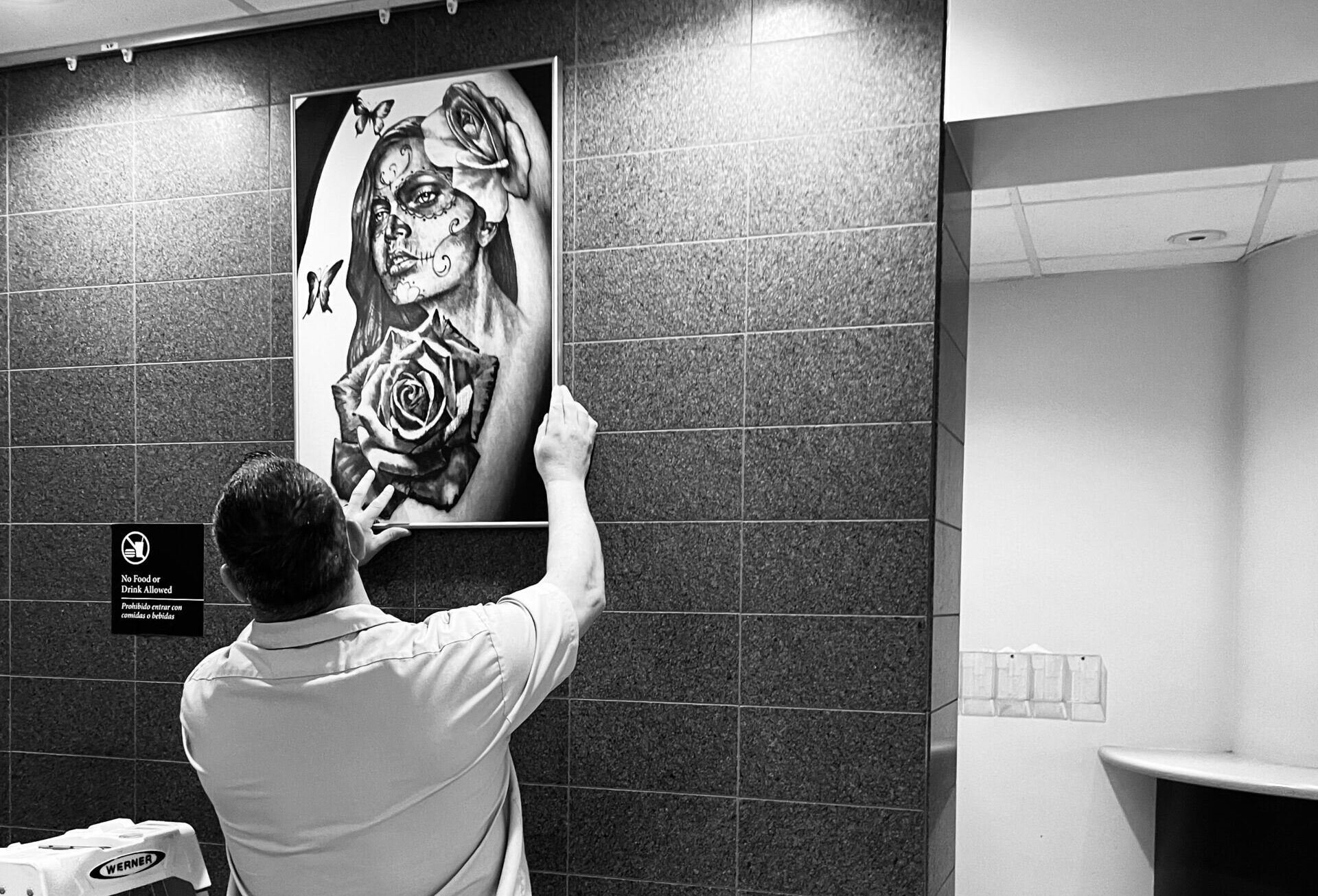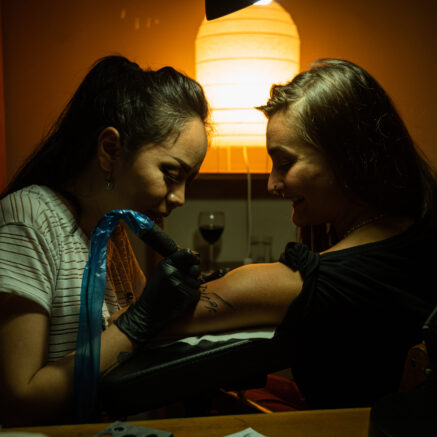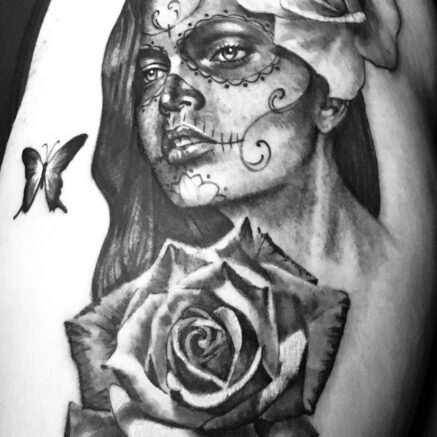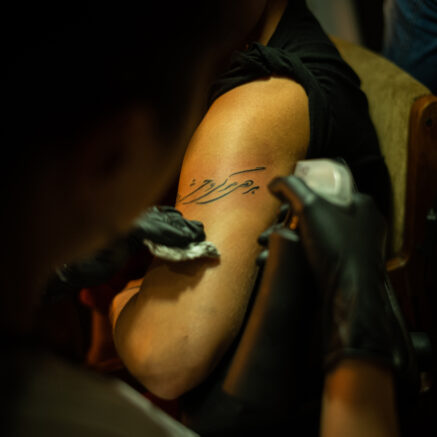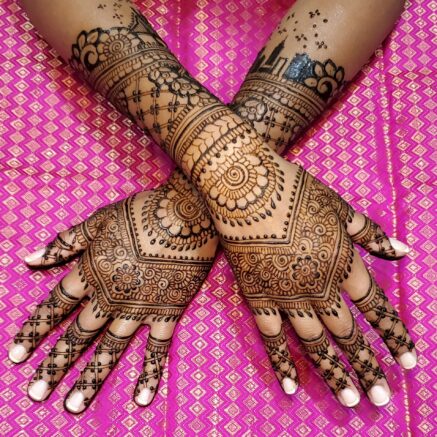Traditional Afghan Tattoo
Depicted here is the khaal adorned hand of Mariam Solaimankhel, a member of the Afghan parliament representing the Kuchi nomadic community. Sheen Khaal, a single-needle tattoo style practiced by tribal populations in Afghanistan as well as throughout the Middle East and North Africa, and is believed to predate the Islamic traditions of the region. Khaal translates to dot, as the style mainly consists of blue-green dots and small circles adorning the faces, foreheads, and hands of women. Thought to ward off the evil eye, these tattoos commonly take the form of circles and crosses. Khaal is also practiced for beauty as well as a treatment for pain.
Unlike other styles of stick-and-poke tattoos, here the artist, typically an elder woman in the community, uses a small needle and strikes a spot with the goal of causing bleeding. The ink (kohl/kajal) is then used as an antiseptic following bleeding, which leads to pigment depositing into the skin. When used as a treatment for pain, the concept is similar to acupuncture with the intent being to place the needle in the location of the pain and the resulting dying of the skin is merely a side effect of the antiseptic.
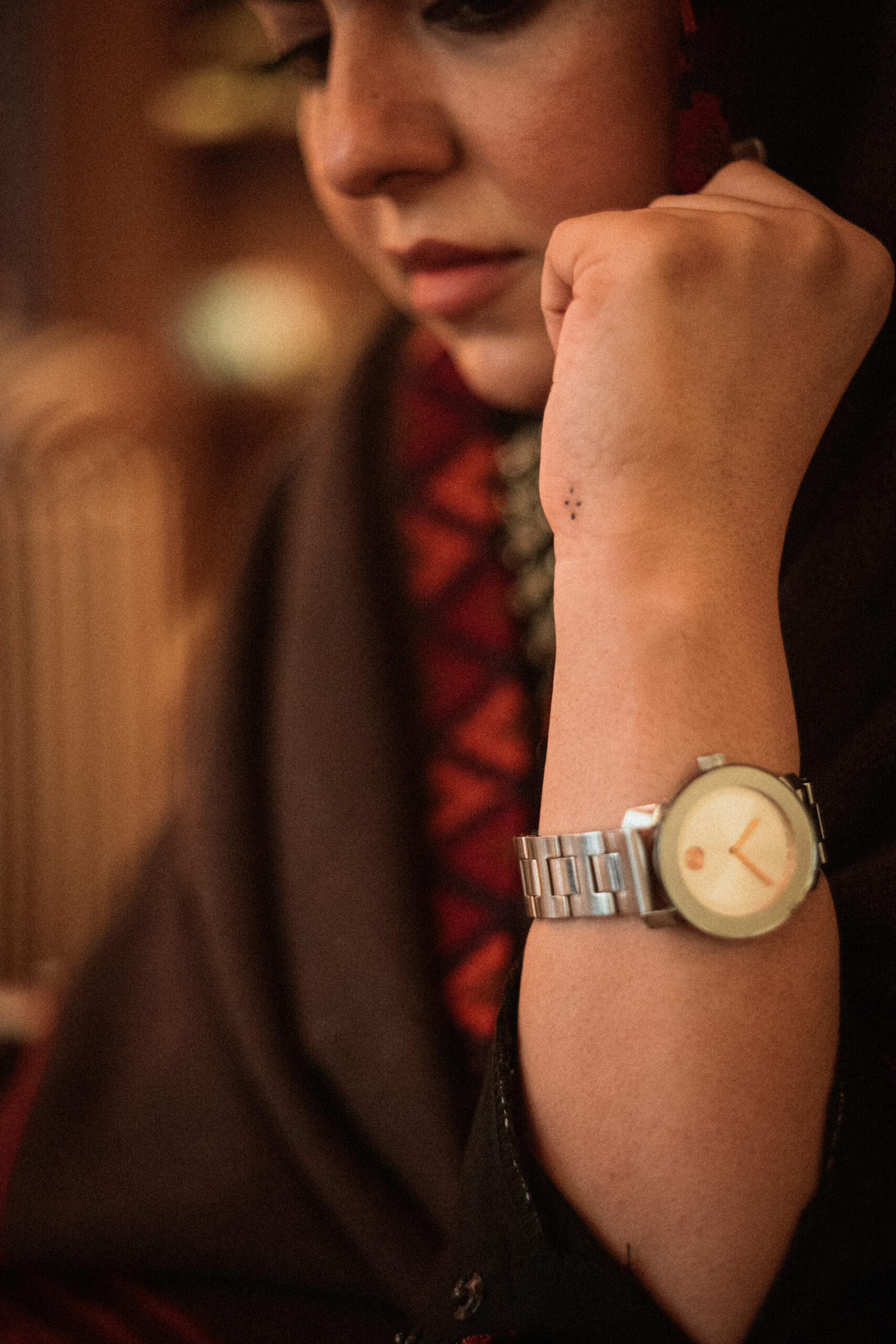
Ivan Flores, Modern Afghani Tattoos, 2021. Digital Photograph. ©Ivan Flores. All rights reserved.
